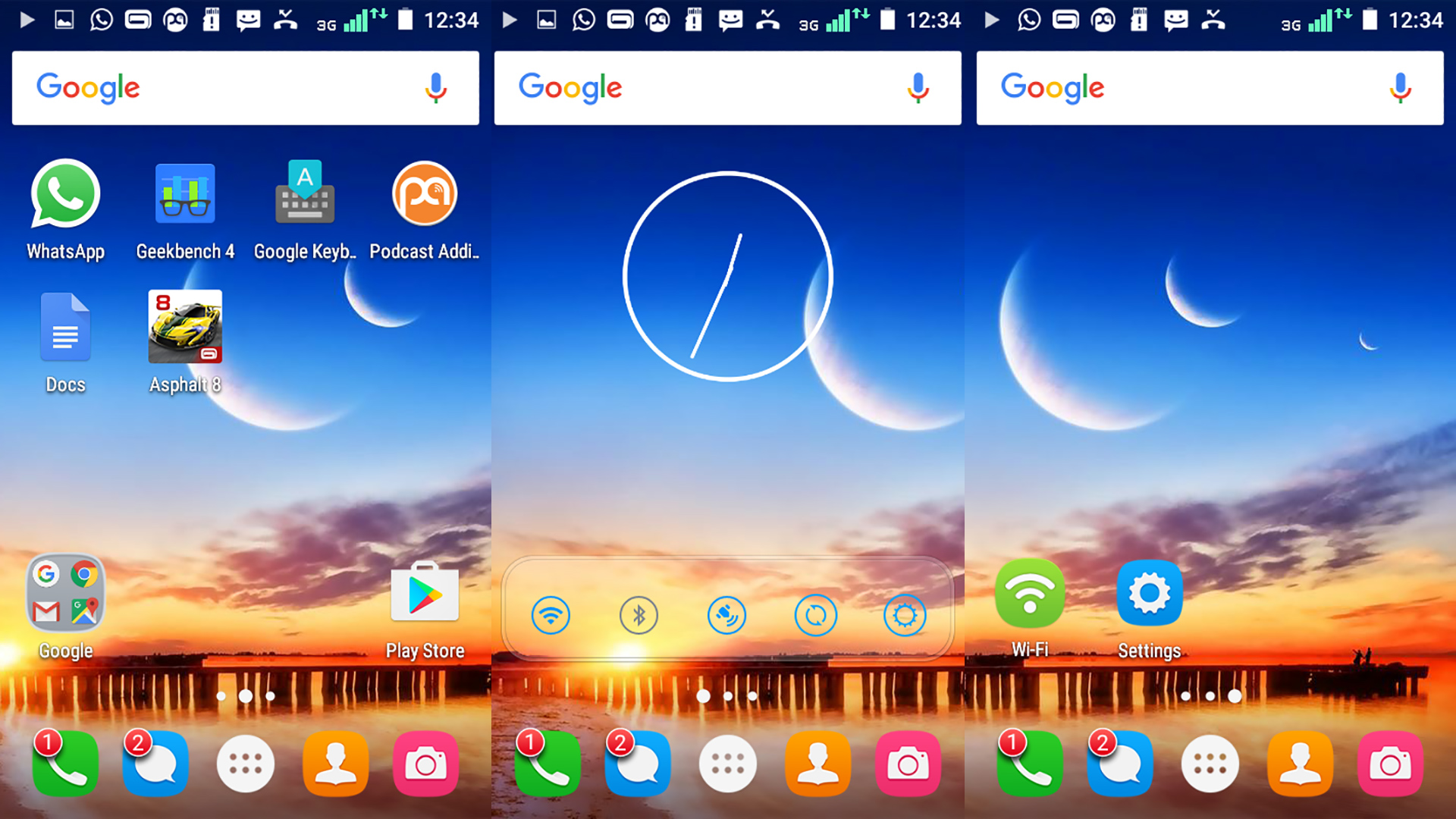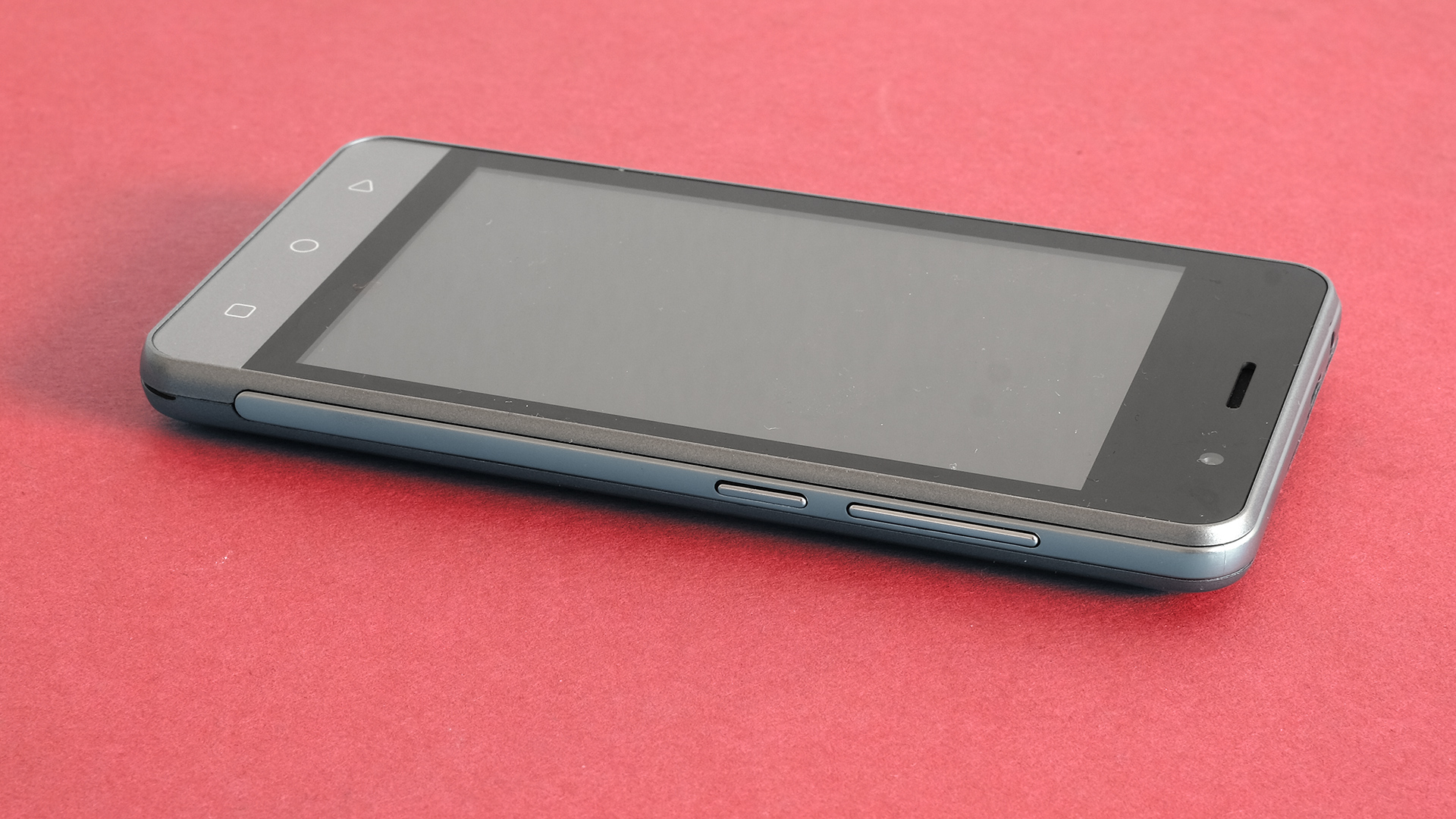Why you can trust TechRadar
Interface and reliability
- Dated version of Android
- Slow at moving between apps and screens
The IMO Q runs Android 5.1 Lollipop. This is a very dated release at this point, and is more prone to slowdown than Android 6.0 when dealing with limited RAM.
You can guess what the IMO Q has. That’s right, limited RAM. It’s slow throughout. Slow to turn on, slow to load apps, slow to make the keyboard pop-up and even a little slow to skip between the home screens and apps menu at times.
If you’re low on patience, this probably isn’t the right phone for you.

The interface is similar to vanilla Android 5.1 in a very broad sense, but the IMO Q has a custom skin that changes the look.
For example, the icons are different and where normal Android has an apps drawer backed by a blank ‘sheet’ of white, this one uses a slightly dimmed version of the home screen background, and pages rather than a vertical scroll of icons.

It’s a mostly inoffensive alteration. We’d prefer the generic Material UI look of standard Android 5.1, but we’d be happy enough if it wasn’t for the headache-inducing performance. This is compounded by quite how tricky we find typing on the tiny, possibly poorly calibrated touchscreen.
Movies, music and gaming
- Few pre-installed apps
- Flat sound
- Weak display makes it rubbish for games and video
The IMO Q is not a great phone for movies or gaming, this should come as no surprise. Its screen is small and is not of great quality.
Sign up for breaking news, reviews, opinion, top tech deals, and more.
It’ll do the job in a pinch, of course, but we honestly can’t imagine watching a whole film on this screen. The display also has an impact on gaming. While the resolution isn’t a huge issue thanks to the teeny display size, the poor colour and limited contrast are. And as you’ll see in the next section, there’s not enough power on tap for high-end titles.
Speaker quality is nothing special either. While the sound doesn’t distort at max volume, the IMO Q isn’t very loud and the tone can charitably be described as basic. It’s flat and crude.

If you do want to play music or video, you’ll have to find your own apps to do so. The IMO Q even lacks the ‘Gallery’ app that is so often the default barebones media player.
This is really a better outcome than its polar opposite: a phone so rammed with ‘complimentary’ apps it resembles a rubbish dump. Downloading a few extra apps from Google Play only takes a couple of minutes, so this is no major problem.
Specs and benchmark performance
- Poor gaming performance
- Very low Geekbench 4 score
The IMO Q has a Spreadtrum chipset. This isn’t a hugely popular or well-known brand, but even Samsung has used some of its chips in low-end phones.
It’s a quad-core 1.2GHz SoC using dated Cortex-A7 cores. While we primarily blame the limited 1GB of RAM for the phone’s dire day-to-day performance, this chip is also not quite strong enough to do justice to Android’s more taxing games, despite the low 480 x 800 screen resolution.

There’s enough chug in 3D racer Asphalt 8 to dilute your enjoyment. Casual games run passably well, but they’re still tripped-up by very slow load times, a finicky touchscreen and the low display quality. The IMO Q zaps some of the fun out of mobile gaming, so spend a little more if you play a lot.
In Geekbench 4, the IMO Q achieves a multi-core score of 982, and that says it all. This is a very low score, almost doubled by other ‘budget’ phones.
For the hardcore techies out there, the CPU is a 32-bit chipset made using a 28nm process. Both of these are rather out of date at this point, although to give Spreadtrum some credit, the latest low-end Snapdragon 212 is still 32-bit/28nm.
Current page: What's it like to use?
Prev Page Introduction, key features and design Next Page Battery life and camera
Andrew is a freelance journalist and has been writing and editing for some of the UK's top tech and lifestyle publications including TrustedReviews, Stuff, T3, TechRadar, Lifehacker and others.
